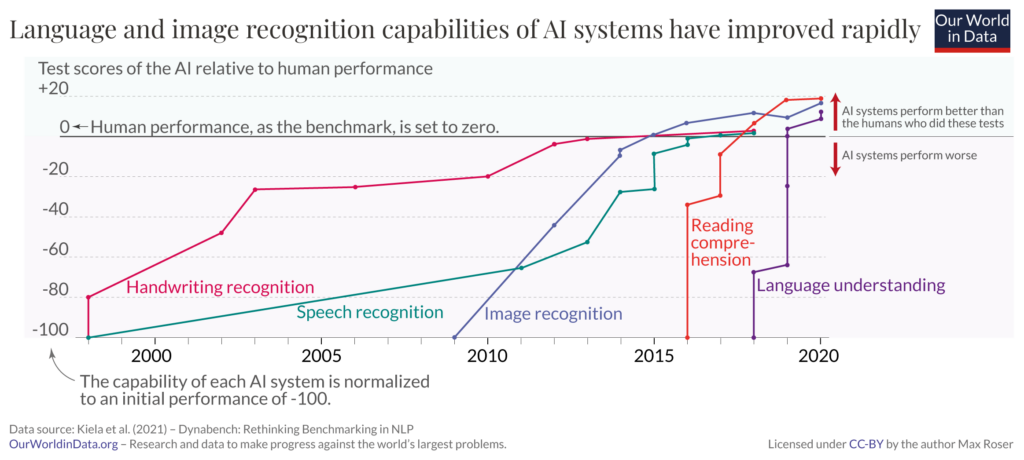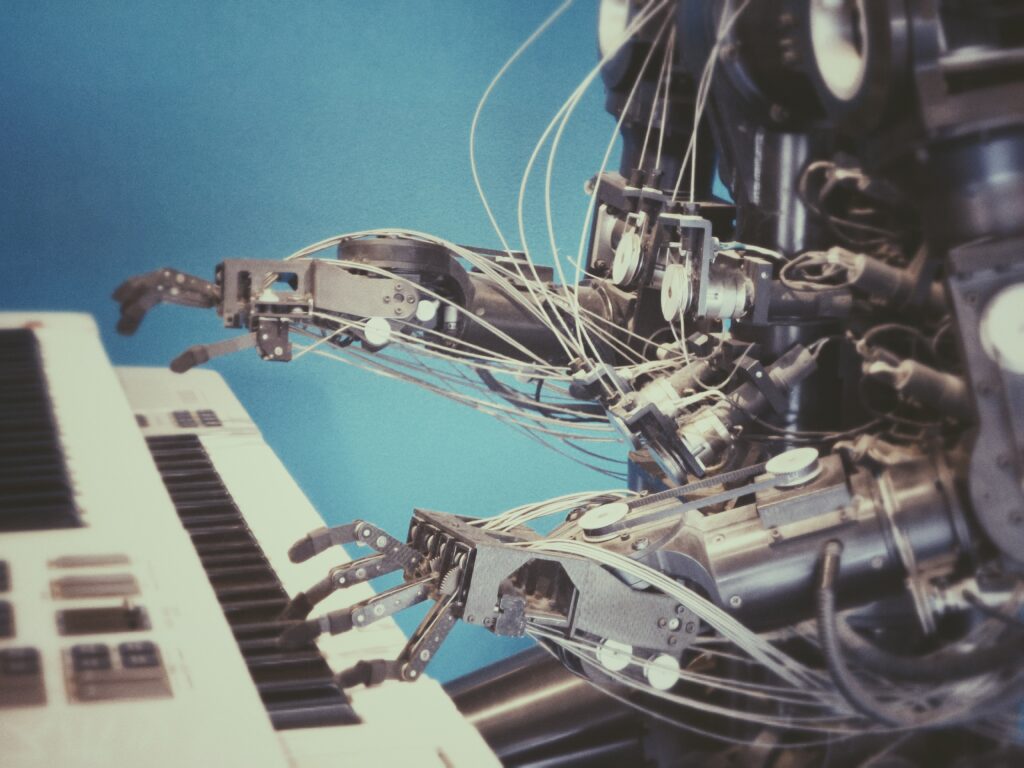A brief explainer on AI: what it is, where did it come from and why is it surfacing now?
In 1996, IBM’s Deep Blue computer made history by becoming the first artificial intelligence (AI) system to defeat Kasparov, the world chess champion. Cut to 25 years later; ChatGPT is released. It broke records, quickly becoming the fastest-adopted technology in history, reaching one million users in five days and 100 million users in two months.
To put that into perspective, just to hit 1 million users, it took Facebook 10 months and Spotify five. As many in the industry are calling it a ‘Google-level event’ we could all learn a little more. I have dived into the issue so that you don’t have to, here is what I found.
What is Artificial Intelligence?
At its core, artificial intelligence refers to machines capable of performing tasks that typically require human-like thinking processes. These can include learning from experiences, understanding language and context, recognising patterns or objects, and problem-solving.
It’s important to note that today’s explainer mostly focuses on ‘narrow AI’. The AI straight out of sci-fi is called ‘General AI’ (also known as strong or true AI) which represents a more advanced form of artificial intelligence. It envisions machines possessing cognitive abilities similar to humans – being able to learn from experience, independently, without any pre-programming. However, despite significant progress in recent years most estimations seem to suggest that this level remains pretty far from reality (at the time of writing).

Why now?
Put simply; it just started to get good. It became comparable to humans in desirable tasks; chess is one thing but creating art, processing concepts, and comprehension of language is quite another. This has led to further funding which has led to greater development. As time has gone on, processors have become better, improving our ability to train AI, and leading to better outputs. The reality is that this has been built on for decades; Deep Blue sparked conversations in the late 90s but there is a history going back far further than that.

AI’s journey has been marked by milestones of innovation. Despite its complex nature, understanding AI’s historical timeline can shed light on its future potential. The first real breakthroughs were in the 1940s and 1950s with Alan Turing and the breaking of the Enigma code. But developments continued up until the late 60s before the AI “winter” which paused most development due to high expectations and limited technology.
In 1995, the chatbot Alice was developed and IBM completed their development of Deep Blue. In 1996, Deep Blue went to play Kasparov and the rest is history. There was a rematch in ’97 and Deep Blue beat him again.
From there, the focus shifted towards neural networks, which attempt to copy living brains by merging human and machine ways of thinking. This gave rise to deep learning which involves multiple layers of neural networks, optimising the learning process. This led directly to investment from major companies, which is why we have AI-powered assistants like Siri and Alexa.
In 2021, OpenAI’s GPT-3 demonstrated advanced language understanding, capable of generating human-like text based on given prompts. Then in 2022 AI exploded and ChatGPT’s release in December was just the beginning. AI has been there all along, but ChatGPT changed the game.
From big business to open source
In early May 2023, a leaked memo from Google warned that it, and other companies, have already lost the AI race. It states that the company is falling behind in the development of language models, particularly in comparison to the rapid progress being made in the world of open-source which is utilising Facebook’s LLaMA model, leaked earlier in the year.
Key innovations that have emerged from the world of open-source include the ability to run major models on personal devices, the creation of scalable personal artificial intelligence, and the emergence of art and text models without restrictions. While Google’s models still hold a minor edge in terms of quality, the memo reported that this gap is rapidly closing. The memo also suggests that Google needs to prioritise collaboration with these developers; who will soon be able to do the same work for a fraction of the cost.
The Rise of Generative AI
Generative AI, such as ChatGPT, has emerged as an upcoming and promising field of artificial intelligence. It leverages machine learning algorithms that can generate new outputs (such as images, texts, or sounds) based on input data. This ability to create novel content without explicit human direction sets generative AI apart from other forms.

Fears Associated with Generative AI
Obviously, there are several concerns surrounding AI and its development. Among these fears is that it may replace human labour in various fields – leading to job displacement and increasing social inequality.
In the near term, there are worries about the accuracy of AI. Mistakes, dubbed ‘hallucinations’, are still a key issue requiring a user to check the efficacy of the information. While many are concerned with the licensing of the words, pictures and sounds that generative AI scrapes from the wider internet.
Furthermore, fears that AI will be used by bad actors have raised ethical concerns. This has largely been picked up in conversations relating to misinformation and disinformation with anxieties ranging from the creation of deep fake videos by foreign powers; to worries that lazy outlets will not verify content before it hits the reader. Without regulation and consumer protection, AI could pose severe risks to safety and clean news flows in the near to immediate future.
Potential Benefits Realized by Generative AI Technology
Despite these concerns, it’s essential not to overlook the numerous benefits offered by generative artificial intelligence systems when harnessed responsibly. The creative capabilities enabled by this technology can revolutionise industries from art to professional services and finance.
Additionally, for businesses, automated processes powered by AI can result in increased efficiency, cost savings, and improved public services. These advancements could help tackle complex global problems affecting us now and into the future like climate change, poverty, and combatting disease.
Ultimately, if managed correctly, AI may bring forth immense societal and economic progress whilst mitigating the potential risks associated with the misuse of the technology.
Navigating the high seas of AI
This conversation about the most recent AI revolution is different from the one about Deep Blue in 1996. The rise of generative AI is truly an exploration into new and uncharted waters. We must understand the benefits and fears and think about the potential consequences for society as a whole. It is here to stay; even this piece is AI-assisted. But the best way to learn is by being curious and trying it out, even just asking it dumb questions to see what it’ll do.
Sites like Futurepedia add new AI tools to their directory every day; ChatGPT is soon to release its 4th iteration and has an official phone app. OpenAI’s playground gives further options to mess with the systems involved and Google’s AI test kitchen’s MusicLM can be an interesting experiment just to start.
AI represents a change at the trunk of the decision-making tree for businesses and private individuals alike. While not perfect; it’s moving fast and there is far more to know than I could include here. The possibilities seem to be endless and the immeasurability of this change is scary as it is exciting. It will soon begin to deeply change our lives. If we understand it; we may get to influence decide how to change them for the better.


